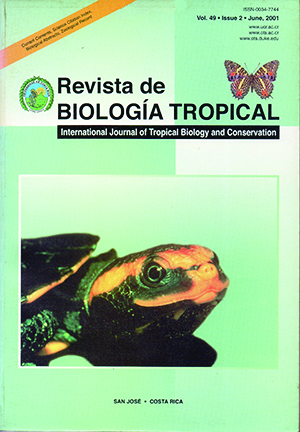Abstract
Bahía Concepción (Gulf of California) was studied to describe some extremely low dissolved-oxygen values at the bottom of the bay. Surveys included measurements of vertical distribution of temperature, dissolved oxygen, nitrate, nitrite, phosphates and hydrogen sulfide. Thermal stratification from early spring to autumn and a well-mixed water column during the winter were present. Dissolved-oxygen concentration was homogeneous in the water column from winter to spring (5-7 mg L-1). From summer to autumn, bottom dissolved oxygen (> 20 m) decreased to reach conditions of hypoxia (1-2 mg L-1) or anoxia; nitrate, nitrite, and phosphates increased (up to 13, 1.7 and 2.2 µM) followed by a last short period of a deep hydrogen sulfide layer (up to 3.1 mg L-1). A back calculation to estimate the input of organic matter in the deep layer showed that 18 g C m-2 y-1 needed to be trapped in the bottom to induce such an oxygen depletion. This period is thought to be unfavorable for bottom infauna in this bay.##plugins.facebook.comentarios##

This work is licensed under a Creative Commons Attribution 4.0 International License.
Copyright (c) 2001 Revista de Biología Tropical
Downloads
Download data is not yet available.


